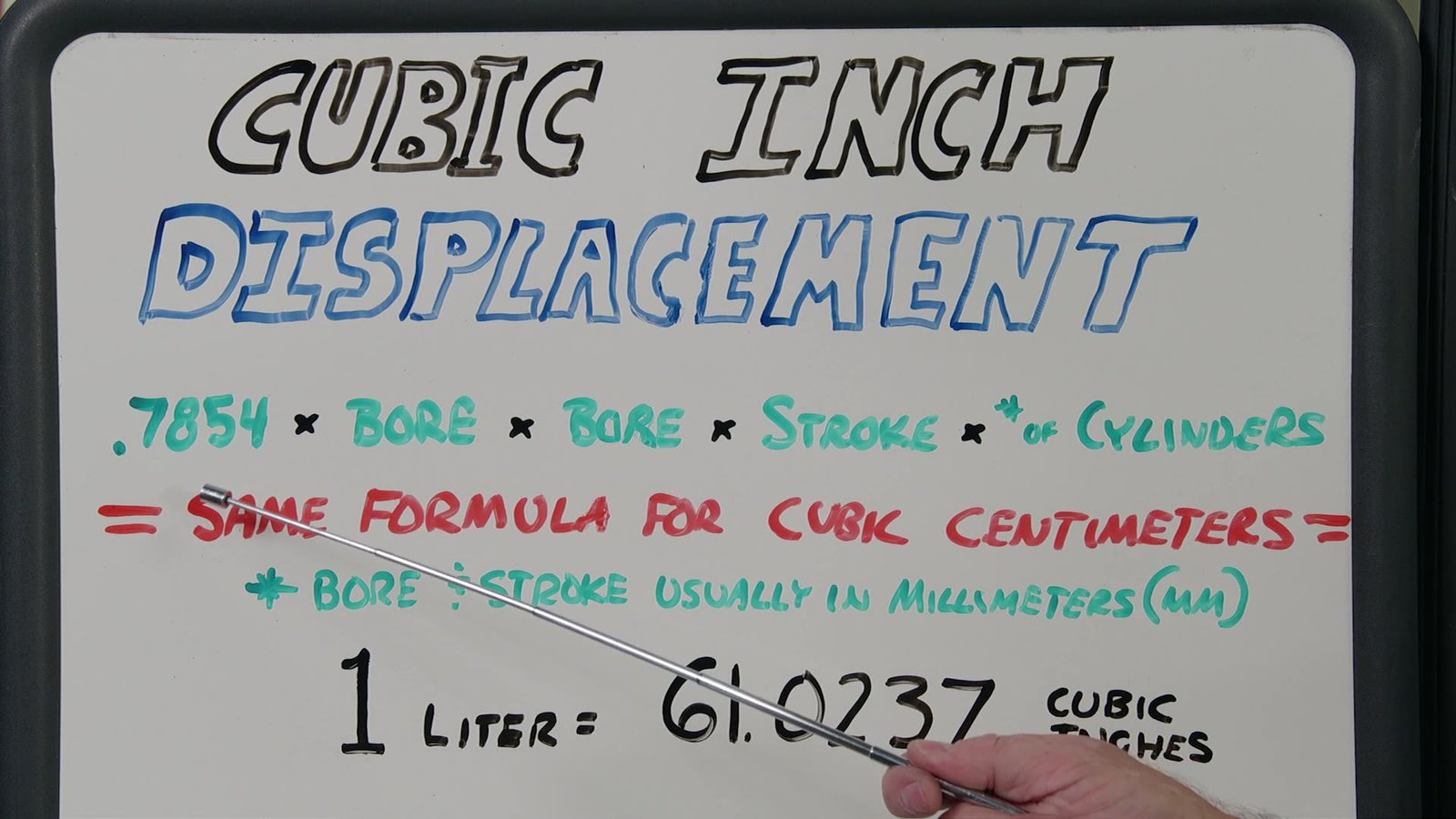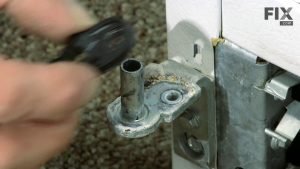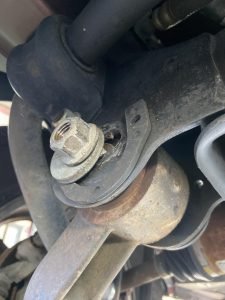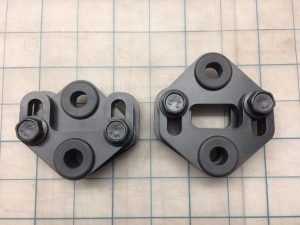To calculate cubic inch displacement, you multiply the cylinder volume by the number of cylinders in the engine. It is a measure of the total volume displaced by the engine’s pistons.
Cubic inch displacement is important for determining the power output and performance of an engine. By understanding the displacement, you can make informed decisions regarding modifications, upgrades, or replacements for optimal performance. Whether you are a car enthusiast or a mechanic, knowing how to calculate cubic inch displacement is a valuable skill.
We will guide you through the process of calculating cubic inch displacement, providing you with the knowledge to make informed decisions about engine performance.
Contents
- Understanding Cubic Inch Displacement
- Basic Formula For Calculating Cid
- Step-By-Step Guide To Calculate Cid
- Common Mistakes To Avoid
- Alternatives To The Traditional Cid Calculation Method
- Importance Of Cid Calculation In Various Industries
- Conclusion And Final Thoughts
- Frequently Asked Questions On How To Calculate Cubic Inch Displacement
- Conclusion
Understanding Cubic Inch Displacement
Cubic inch displacement is a crucial aspect of understanding the power and performance of an engine. This term refers to the total volume capacity of all the cylinders within an engine. By calculating cubic inch displacement, you can determine the engine’s efficiency and power output.
This measurement plays a key role in various applications, such as determining the suitability of an engine for a particular vehicle or estimating fuel consumption. Additionally, cubic inch displacement is often used in performance car discussions, as it provides insight into an engine’s potential horsepower.
To calculate cubic inch displacement, you need to measure the cylinder bore diameter and stroke length, and then use a formula to determine the total volume. This information is valuable for automotive enthusiasts, mechanics, and engineers in evaluating engine performance and making informed decisions.
Basic Formula For Calculating Cid
Calculating cubic inch displacement (CID) involves understanding the basic formula and the variables used in the calculation. The formula is a straightforward equation that allows you to determine the engine’s volume. To calculate the CID, you need to know the cylinder bore diameter and stroke length.
These variables, expressed in inches, are squared and multiplied by Pi (approximately 3. 14). The resulting product is then multiplied by the number of cylinders in the engine. By following this simple formula, you can accurately determine the cubic inch displacement of an engine.
Understanding the variables and units used in the calculation is essential for accurate measurement and comparison of engine performance. Whether you are a mechanic or an automotive enthusiast, mastering this calculation can provide valuable insights into engine specifications.
Step-By-Step Guide To Calculate Cid
Calculating cubic inch displacement requires gathering specific measurements and information. First, you need to measure the bore diameter and stroke length of the engine. Next, determine the number of cylinders in the engine. Once you have these measurements, you can use the formula: displacement = (π/4) x (bore diameter^2) x stroke length x number of cylinders.
For example, let’s say the bore diameter is 4 inches, the stroke length is 3 inches, and there are 8 cylinders. Using the formula, the cubic inch displacement would be: (3. 14/4) x (4^2) x 3 x 8 = 301.
44 cubic inches. This calculation shows the process of determining the engine’s cubic inch displacement by utilizing the formula and the necessary measurements and information.
Common Mistakes To Avoid
Calculating cubic inch displacement can be tricky, but there are some common mistakes to avoid. One important pitfall to watch out for during the calculation process is starting with inaccurate measurements. Ensure that you have measured the length, width, and height correctly to get an accurate result.
Another mistake to avoid is forgetting to convert the measurements to the same unit of measurement. Make sure all measurements are in inches or cubic inches before proceeding with the calculation. It’s also crucial to double-check your math and calculations to avoid any errors.
Using a calculator or spreadsheet will help to ensure accuracy. Lastly, be aware of any rounding errors that may occur during the process and adjust accordingly. By following these tips, you can achieve accurate cubic inch displacement calculations.
Alternatives To The Traditional Cid Calculation Method
Calculating cubic inch displacement (CID) doesn’t have to be limited to traditional methods anymore. With advancements in technology, alternative tools offer more precise calculations. These modern solutions allow for a more accurate measurement of CID, making it easier than ever before.
However, it’s essential to consider both the benefits and drawbacks of these alternative methods. While they provide accuracy, some may find them more complex or time-consuming. Nonetheless, exploring these tools can open new possibilities for calculating CID effectively. Whether you’re an automotive enthusiast or a professional engine builder, embracing modern technologies will enhance your precision and potentially optimize engine performance.
So, why stick to the traditional when you can embrace the advancements of today? Step into the world of alternative CID calculation methods and unlock a new level of accuracy.
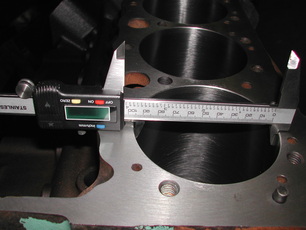
Credit: www.streetrod101.com
Importance Of Cid Calculation In Various Industries
Calculating cubic inch displacement (CID) is crucial in various industries. In the automotive field, CID plays a significant role in determining vehicle performance. It affects factors like power, torque, and fuel efficiency. Proper CID calculation helps engineers in designing and manufacturing processes, especially in the engineering industry.
Precise CID values ensure the efficiency and effectiveness of machinery and equipment. CID calculations are essential for optimizing performance and avoiding any potential issues. In industries where precision matters, such as automotive and engineering, CID calculation is a vital aspect that should not be overlooked.
By accurately calculating CID, professionals can ensure the smooth operation and optimal performance of their products and processes.
Conclusion And Final Thoughts
Calculating cubic inch displacement (CID) is an essential step in engine performance analysis. CID refers to the total volume of all the cylinders in an engine. By knowing the engine’s CID, we can determine its power output potential and compatibility with different components.
Throughout this blog post, we discussed various methods to calculate CID, including the formula for a simple shape like a cylinder and more complex configurations like V-shaped and rotary engines. Additionally, we highlighted the significance of accurate CID calculation for engine builders, vehicle tuners, and enthusiasts.
Remember, precise calculations lead to improved performance and informed decision-making. To ensure a successful CID calculation, always double-check your measurements, use the correct formula for your specific engine type, and seek the assistance of experts when needed. With these final tips in mind, you are equipped to embark on your engine-building journey with confidence.
Frequently Asked Questions On How To Calculate Cubic Inch Displacement
How Is Cubic Inch Displacement Measured?
Cubic inch displacement is measured by calculating the volume of the engine’s cylinders.
What Is The Formula For Engine Displacement?
The formula for engine displacement is calculated by multiplying the number of cylinders by the cylinder bore and stroke.
How To Calculate Displacement?
Displacement can be calculated by subtracting initial position from final position.
What Is The Formula For Cubic Inches Of An Engine?
The formula to calculate cubic inches of an engine is cylinder bore (in inches) multiplied by the stroke length (in inches) multiplied by the number of cylinders.
Conclusion
To summarize, calculating cubic inch displacement is a fundamental aspect of understanding an engine’s performance capabilities. By following the simple steps outlined you can accurately determine the engine’s displacement and make informed decisions about modifications or upgrades. Remember to measure the bore and stroke correctly, and take into account any adjustments for the number of cylinders and pistons.
Additionally, be sure to calculate the total volume accurately to get an exact cubic inch displacement. Whether you are an automotive enthusiast, a mechanic, or simply curious about engine specifications, this knowledge is essential and can enhance your understanding of engines.
So why wait? Get started calculating the cubic inch displacement of your engine today and unlock a whole new level of understanding and appreciation for its power and performance.
Affiliate Disclosure: As an Amazon Associate, I earn from qualifying purchases made through links on this site.

